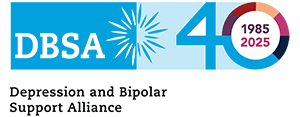The DBSA Young Adult Council (YAC) developed unique resources to support other young adults living with depression and bipolar. They used their own lived experience to help inform the way that DBSA provides hope, help, support, and education. In this piece, Mik talks about defining identity.
By: Mik, DBSA YAC member
Identity is a complicated journey; a culmination of experiences and innate features that shape us into who we are. For me, this has been especially impacted by my mental illness and queer identity. I was only 10 when I first experienced intrusive thoughts of hurting myself; it wasn’t until the last few years that I finally understood why.
In high school, I began exploring my attraction to girls, facing strange opposition from family and friends. Yes, there was some religious-based homophobia, but for the most part, it was okay to “like girls”. The homophobia was much more subtle. “But you wouldn’t date a girl, would you?” “You’re just gonna end up with a man anyway.” My sexualization of women was more acceptable than my public declaration of romantic feelings. It’s taken me years of continuously sorting through feelings of internalized homophobia and compulsive heterosexuality. Truthfully, I might’ve figured it out much sooner, if I hadn’t had more important things on my plate.
I was diagnosed with bipolar disorder at 19, mid-manic episode. I had spent months actively trying to figure out what was “wrong” with me, after years of agonizing emotional turbulence. I was lucky to find a psychiatrist who listened, and even luckier to receive the right diagnosis. Even then, it took over two years to find the right medication.
There wasn’t much time to explore dating women with that going on, not when manic-me jumped into relationships and situations with guys I didn’t even like. But I certainly tried, and the more I talked about it, the more solidified it became. I am attracted to both men and women, and I always have been. Still, I had much more to sort through before I could truly come to terms with my queerness.
Towards the end of college, burnout settled in from years of unknowingly masking ADHD. I’m what they call late-diagnosed, as many AFAB with ADHD are. It didn’t help that I had untreated bipolar disorder. At 21, I finally had a doctor listen to me and treat me for ADHD. Obviously, it’s much more complicated with comorbid bipolar disorder, not to mention self-gaslighting and invalidation. But I started figuring it out; I haven’t had an episode in a year and a half.
And then, at almost 23, I started having another crisis. I questioned the gender binary constructed and forced on me by society and had to face the fact that I didn’t fully resonate with it. I had been restricted to a box I didn’t choose to place myself in. Starting to reject that finally allowed me a taste of solace in my self-expression. It’s freedom from the constraints of societal norms, and it’s terrifying. Who am I if not a woman? Where does my value come from now? But facing it didn’t change who I am, and there’s no going back.
All these labels I’d acquired: bipolar, ADHD, bisexual, and now non-binary. Yes, they’re part of my experiences, they’ve impacted my perception and interaction with the world. Bipolar disorder uniquely shaped the lens through which I view the world, and my queerness became such a strong part of my narrative. The realization that I was bisexual brought a profound sense of freedom and authenticity. It was an acknowledgment of the beautiful spectrum of love and attraction.
But at some point, I just wanted to label myself as “me”. Who cares how I dress or want to be referred to? Why does it matter who I love? This is where I am now, and where my liberation has grown.
Living at the intersection of bipolar disorder and queerness has not been without its challenges. Societal stigmas surrounding mental health and the LGBTQ+ community go hand in hand with prejudice. It has taken its toll on me. But I have developed resilience to ableism and ignorance. I refuse to concede to a world built on fear. All it’s done is solidify my determination to educate and advocate for others like me, and to look outside of my own intersectionality.
I spent so much time trying to figure out what was “wrong” with me when what I really needed was to embrace myself. Bipolar disorder, ADHD, and my queerness are all part of my experiences. And while they haven’t made my life easy, I have come to love them as integral parts of who I am. They’ve forced me to stay vulnerable, navigate the highs and lows, and find strength in self-acceptance.
My journey isn’t even close to being over. From identifying as straight and cisgender to embracing a non-binary identity and attraction to others, every step has brought me closer to loving myself authentically. I’m working to stand proudly in my identity, to unapologetically embrace and respect myself, and, hopefully, to inspire others to do the same.
I believe we must first share our own stories and truths before we can inspire a more inclusive and compassionate world. Even though it’s difficult, even though it can be painful to open up while fearing judgment, it’s what I aim to do.


